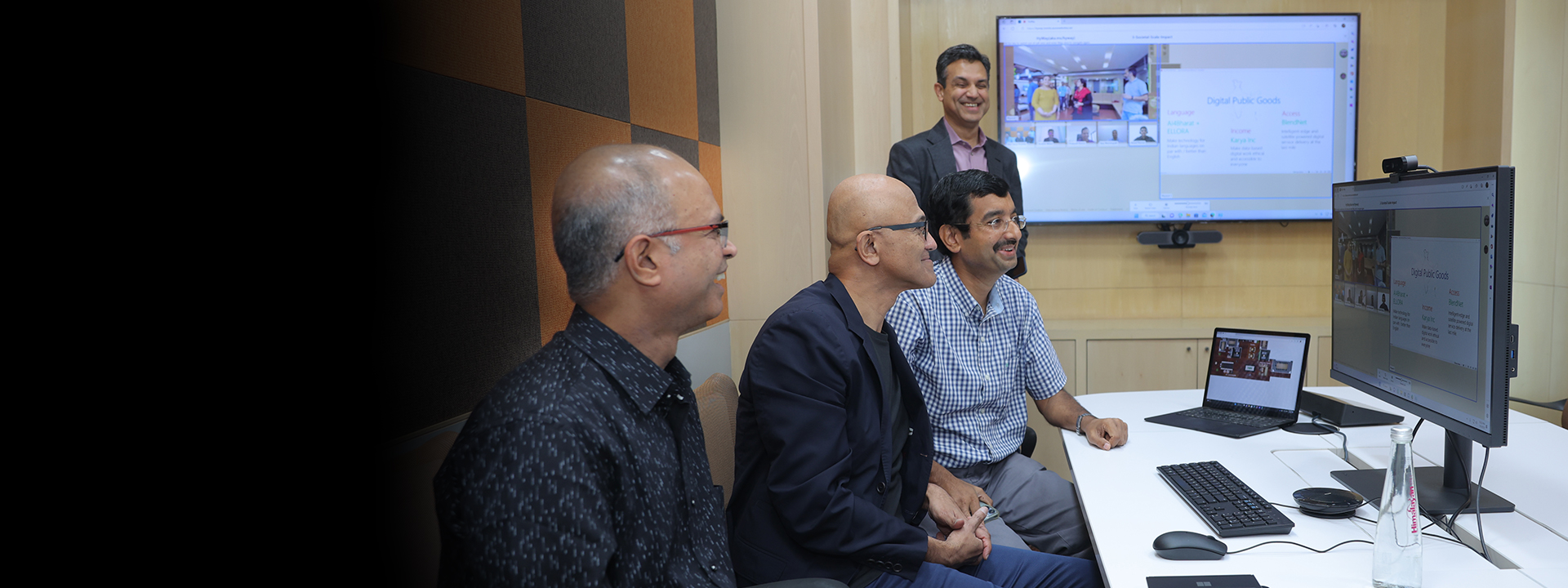This page provides an overview of the HyWay experience through a set of video clips from a deployment at a poster event at Microsoft Research India in February 2023.
A key aspect of attending such an event in person is being able to experience the setting in its fullness — hearing the buzz of background conversations and seeing who is around. This can be clearly seen in the following video clip of an in-person user walking through the event floor:
HyWay seeks to approximate this experience in a hybrid setting. Here’s a video clip of a remote user “walking through” the same event floor using the “map view” of HyWay. This user can hear the buzz of the floor, with voices fading in/out as they move about. The user can also see who is around via the face bubbles on the map — red halos for in-person users and green for remote users.
Not only can the remote user walk around, but they can also engage in conversation with in-person and remote users by “stepping in” to a conversation zone and entering the “call view”. Such zones could either be physical (i.e., equipped with an A/V setup) or virtual.
The following clip shows the remote user entering a physical zone, where there is already an ongoing conversation. Notice the “neighbourhood view” near the top-right of the call view, showing the face bubbles of nearby remote users. This provides the remote user awareness of their immediate surroundings, thereby avoiding surprises, even when the user isn’t in the map view.
The awareness resulting from the map view and the neighbourhood view in HyWay enables users to mingle across the physical-virtual divide in interesting ways. First up, here’s an example of a remote user “following” another remote user as they move from one physical conversation zone to another.
The map also enables a remote user to find and “walk up to” an in-person user. In the following clip, the remote user (Professor Sunita Sarawagi, IIT Bombay) spotted a familiar face (Venkat Padmanabhan, who was present in person) on the map and walked over to have a conversation.
The correspondence between the map seen by remote users and the physical space where the in-person users are situated also enables the reverse — an in-person user spotting a remote user on the map and (physically) walking over to the physical zone that is nearest to the remote user to have a chat. (not shown)
Finally, our decision in HyWay to have a map that corresponds to the physical setting, unlike the synthetic maps used in other map-based systems such as Gather and SpatialChat, has paid off in unexpected ways too. Here’s the comment from a remote user (Professor Tom Dietterich, Oregon State University), who noted that having “visited” remotely on HyWay during a previous event gave him immediate familiarity with the physical setting when he visited in person a year later.

